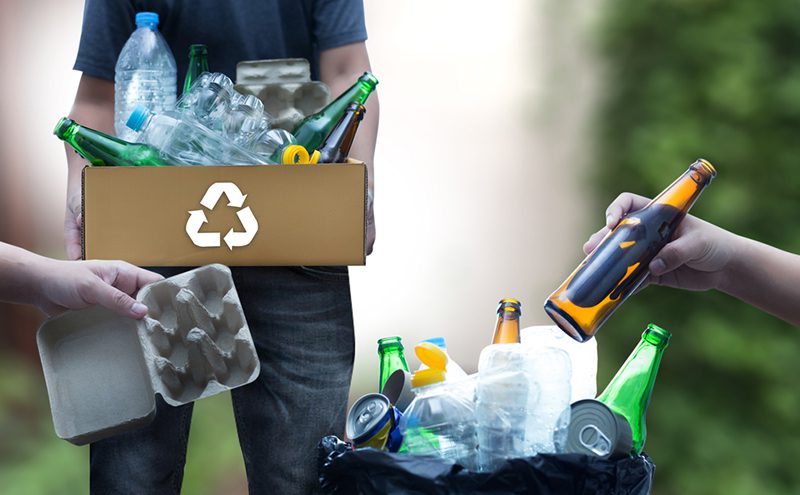
With energy-from-waste (EfW) continuing to dominate the headlines, Ruben Maistry, Sales Manager at recycling equipment supplier Stadler Engineering, discusses why incineration can’t be held accountable for the UK’s stagnating recycling rates.
In July, The Green Party released a comprehensive report investigating the UK’s rising reliance on waste incineration. The document claims that material recovery is not only damaging UK recycling efforts, but also removing valuable resources from the circular economy.
Sourcing figures from WRAP, the document highlights a clear rise in incineration rates (from 5.5m tonnes in 2012/13 to 10m tonnes in 2016/17), compared to stagnating recycling rates. It also suggests that meeting 2020 recycling targets will be unachievable if we continue to fail to address the situation.
However, while the report has gained widespread support, in reality our national rise in incineration is unlikely to be the reason why UK recycling rates have flatlined. In fact, by vilifying incineration, we’re avoiding the real issue that needs to be urgently addressed: the suitability of our recycling infrastructure.
Quality and consistency problems
Over the past decade, Stadler Engineering has designed and installed some of the UK’s most progressive recycling facilities. Operating at the forefront of the industry, our team has spearheaded new technologies, automated entire facilities and designed complete recycling solutions to maximise throughputs. However, despite continued efforts, we’ve seen first-hand the industry begin to stagnate.
Rather than this being related to a national rise in waste incineration – as the Green Party’s report suggests – we believe this is actually a result of poor-quality, unsuitable recycling feedstock arriving at MRFs. Incineration has simply replaced landfill as an effective waste management solution for non-recyclable materials.
Clean, easy to separate, good-quality recycleate is the key to increasing recycling rates, but several issues currently stand in the way of this being achieved. These include a lack of consumer awareness, inconsistent kerbside collections and the rise in complex, mixed material packaging.
Unfortunately, due to a lack of awareness, many consumers don’t understand what they can and can’t recycle, or the importance of best practice recycling. Furthermore, it’s unlikely they see any personal benefit. Therefore, poor-quality recyclate from UK homes is an ongoing issue – nappies, batteries, out-of-date food and even electronic equipment are just a few examples of the items that arrive at MRFs and contaminate recycling streams. Education among consumers, to ensure they understand how to recycle efficiently and effectively, as well as the critical role they play in minimising contamination, is key – and they must be provided with the tools, information and incentives they need.
A consistent national approach to recycling is also critical. With waste management decisions devolved to local authorities, collection schemes are vastly different from region to region. Local authorities need to agree a uniform approach, with separate collections for both dry and organic waste, rather than co-mingled recycling, which reduces material quality and is often rife with contamination.
Indeed, we believe local authorities across the UK should adopt London’s recently launched Environment Strategy. It sets out a municipal recycling target of 65 per cent by 2030, which will be achieved by taking a revolutionary approach to waste collection. The document calls for councils in the borough to offer collections for the six main dry recyclable materials, as well as separate caddies for food waste (with UK households throwing away more than seven billion tonnes of food every year, the nation is sitting on a potential energy goldmine through anaerobic digestion).
We understand that implementing separate collections involves additional costs, but best practice has been adopted in Wales, Northern Ireland and Scotland and widespread financial savings have been achieved. This demonstrates the economic viability.
The effective role of incineration
Amidst our national recycling challenges, incineration plays a vital role – and this shouldn’t be forgotten. Contaminated feedstock (which, as mentioned, is an unfortunate consequence of our outdated national recycling infrastructure), cannot always be processed; as well as potentially being contaminated, they may be made of low-grade composite materials.
The use of incineration to create EfW avoids this waste going to landfill – which is usually the only other option, especially following China’s import ban on low-grade material. Incineration turns waste into valuable, sustainable energy – and should therefore be seen as a preferred alternative to landfill, and positive progression for the UK’s waste management industry.
If the UK is to achieve higher recycling rates, essential action must be taken – but with little relation to incineration. While it’s essential to continue to invest in recycling facilities and, importantly, our recycling infrastructure and consumer awareness, incineration has a role to play too. If we reduce incineration, recycling rates won’t go up, but landfill rates will.







